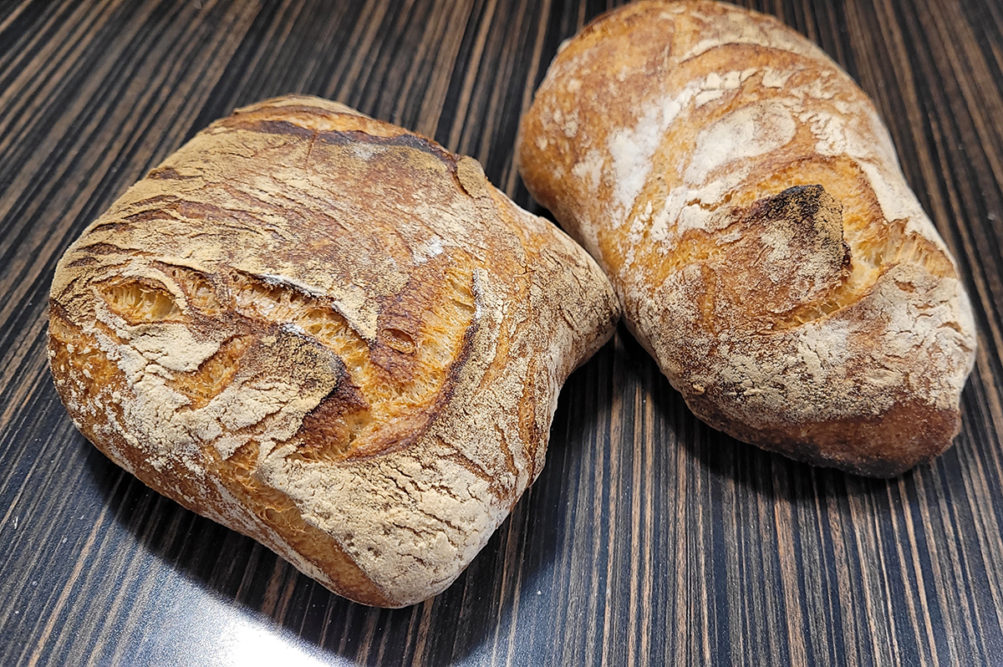Ciabatta rolls are a top seller at Ken’s Artisan Bakery in Seattle. Ken Forkish, who has retired, opened Ken's Artisan Bakery in 2001. Since then, the bakery has received national and international attention, having been named one of the best bakeries in the country by Food & Wine and others.
Customers throughout the Pacific Northwest flock to this iconic bakery to purchase its signature ciabatta rolls and other breads and pastries. The International Association of Culinary Professionals (IACP) previously named the winner of its annual award for outstanding Savory/Sweet cookbook, Baking: Savory or Sweet “Flour Water Salt Yeast: The Fundamentals of Artisan Bread and Pizza” written by Forkish.
The secret to making great ciabatta, according to professional bakery consultant Didier Rosada, hinges on the processes of mixing and fermentation.
There are several detailed ways to mix, depending on your preferences. The short mix method produces dough that is very wet. All ingredients (flour, water, fresh yeast, salt and polish) are mixed in first for 5 minutes. This is followed by a long first fermentation (3-4 hours with at least three folds). A long fermentation time aids the formation of aromas, improves the final product flavor, and leads to longer shelf life.
Not everyone uses preferments to make ciabatta, but Rosada recommends it. It produces a nutty flavor.
Depending on the characteristics of the preferment and on the fermentation process, different aromas will develop. Poolish produces a nutty/sweet flavor in the final product. Biga generates a more acid flavor with some hints of sweetness. To produce the characteristic thin and crispy crust of ciabatta, steam during the baking process is another key element.
For great ciabatta, there are two other options for mixing: improved and intensive.
The improved mix process starts with all the ingredients being mixed in first until well incorporated. The dough is mixed on second speed until the gluten is halfway developed. Mixing time depends on the type of mixer. The process involves a medium length of first fermentation. Punch and fold is necessary to achieve gluten development.
For an Intensive mix, start with all the ingredients being mixed in first until well incorporated. The dough is mixed on second speed until the gluten is fully developed.
Mixing time depends on the type of mixer, but a very long mixing time is needed due to the “free” water. Gluten structure is fully developed. There is a shorter first fermentation, and no need of punch and fold.
Rosada recommends using a double hydration technique when making ciabatta. Flour, preferment, yeast, salt, and a portion of the water are incorporated in first speed, and enough water is used to achieve a medium soft dough consistency. The dough is mixed on second speed until medium gluten development.
The rest of the water is added little by little in first speed until final dough consistency is obtained. Sometimes, second speed can also be used to speed up the water incorporation.
The advantages? A very wet dough can be mixed in a shorter period of time. That limits dough oxidation. The mix time creates dough with sufficient strength, and the gluten structure is developed enough.





